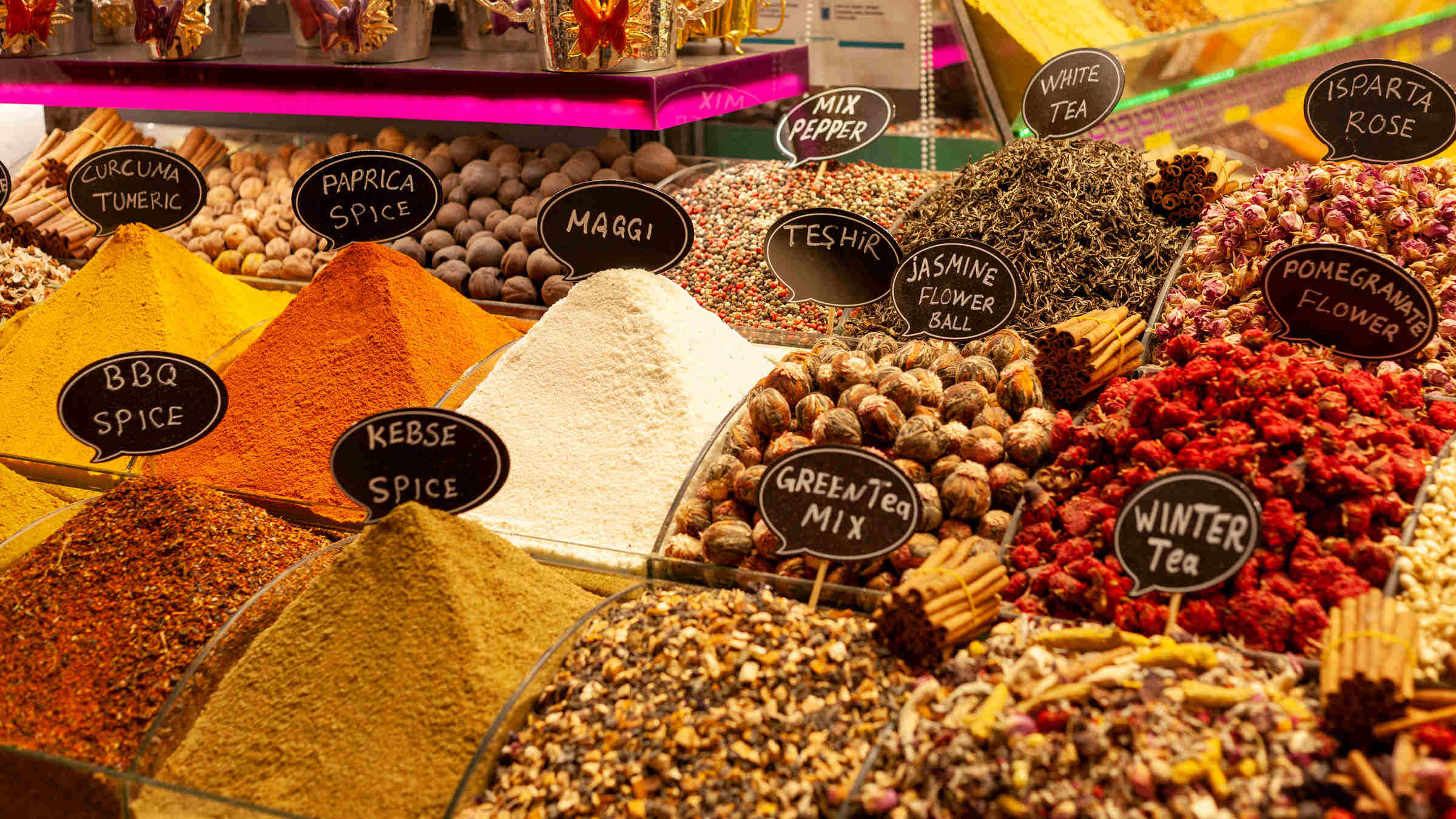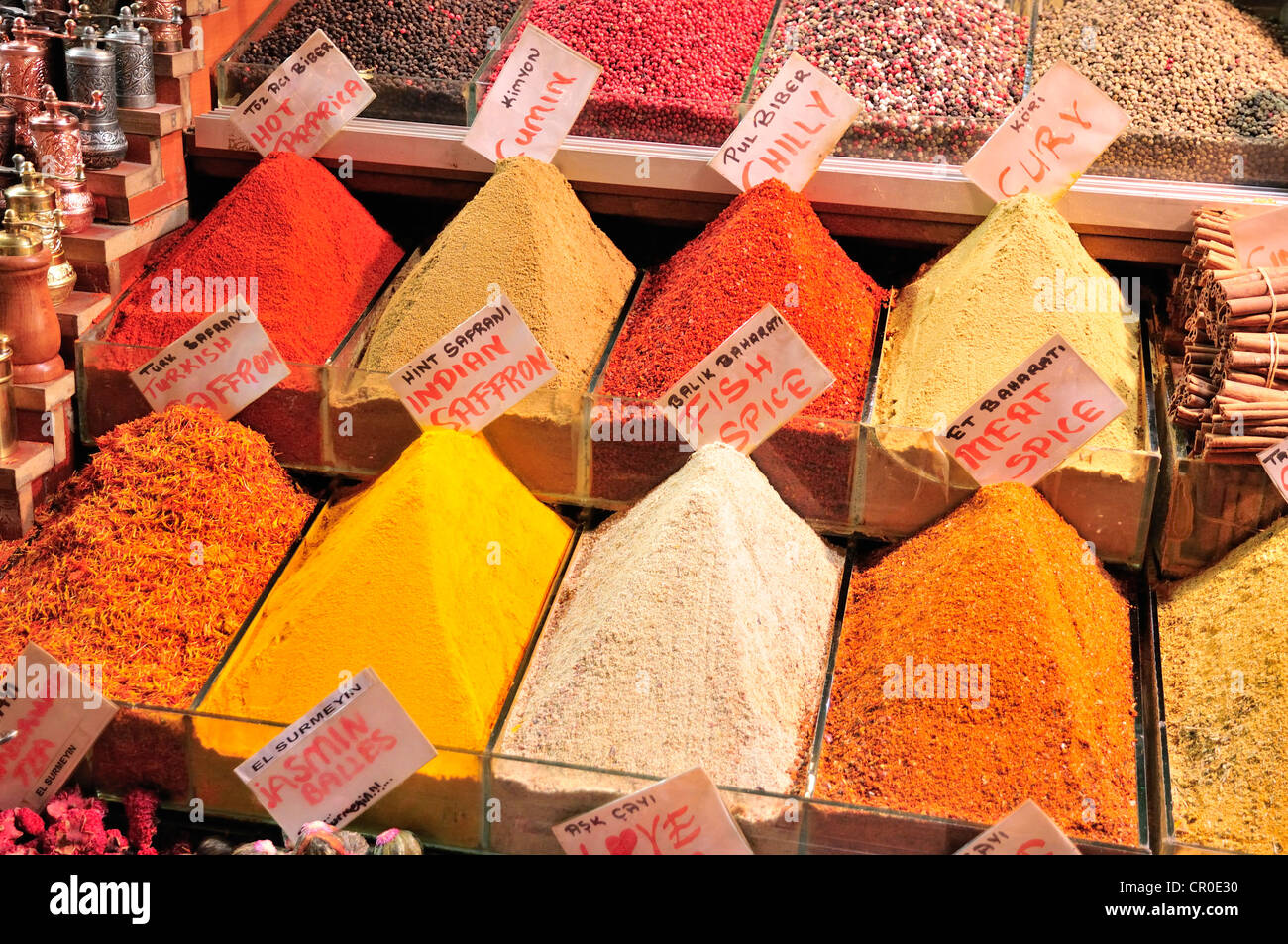Spice Bazar, often referred to as the heart of aromatic treasures, is a fascinating market that has captured the imagination of food enthusiasts and spice lovers worldwide. Nestled in the heart of historical cities, it offers an unparalleled experience of vibrant colors, rich scents, and diverse flavors. As a hub for exotic spices, it plays a crucial role in culinary traditions and global trade.
From ancient times, spices have been an integral part of human civilization, driving exploration, trade, and cultural exchanges. Spice Bazar stands as a testament to this enduring legacy, attracting visitors who seek to explore the origins of their favorite seasonings and learn about the stories behind them. It is not just a marketplace; it is a cultural and historical landmark that connects us to the past while enriching our present.
In this comprehensive guide, we will delve into the world of Spice Bazar, uncovering its history, significance, and the unique spices it offers. Whether you're a culinary enthusiast or a curious traveler, this article will provide you with valuable insights and practical tips to make the most of your experience. Let's embark on this aromatic journey together!
Read also:5starsstockscom Cannabis A Comprehensive Guide To Investing In The Cannabis Industry
Table of Contents
- The Rich History of Spice Bazar
- Understanding the Diverse Spices of Spice Bazar
- The Role of Spice Bazar in Culinary Traditions
- Health Benefits of Spices Found in Spice Bazar
- Spice Bazar as a Tourist Destination
- Tips for Visiting Spice Bazar
- Economic Impact of Spice Bazar
- Sustainability in Spice Trade
- The Future of Spice Bazar
- Conclusion: Why Spice Bazar Matters
The Rich History of Spice Bazar
Spice Bazar has a storied past that dates back centuries, with roots deeply embedded in the spice trade routes of old. These markets were pivotal in the global spice trade, connecting distant lands and fostering economic growth. Historically, spices like cinnamon, cardamom, and saffron were considered more valuable than gold, driving explorers to seek new trade routes and establish connections with spice-producing regions.
Origins of Spice Bazaars
Spice Bazaars originated in regions known for their rich agricultural landscapes, such as India, the Middle East, and Southeast Asia. These markets served as gathering places for merchants, traders, and travelers, facilitating the exchange of goods, ideas, and cultures. Over time, they evolved into vibrant hubs of commerce and culture, shaping the culinary traditions of the world.
According to historical records, the spice trade was a major driver of economic activity during the medieval period. Cities like Venice and Alexandria thrived due to their strategic positions along the spice routes, becoming centers of wealth and influence.
Understanding the Diverse Spices of Spice Bazar
Spice Bazar is renowned for its vast array of spices, each with its unique flavor profile and cultural significance. From the fiery heat of chili peppers to the warm aroma of cinnamon, the diversity of spices available is staggering. Understanding these spices can enhance your culinary adventures and deepen your appreciation for their cultural importance.
Popular Spices Found in Spice Bazar
- Turmeric: Known for its vibrant yellow color and anti-inflammatory properties.
- Cumin: A staple in many cuisines, offering a warm, earthy flavor.
- Saffron: The most expensive spice in the world, prized for its delicate aroma and vibrant hue.
- Cardamom: Adds a sweet, spicy flavor to both savory and sweet dishes.
Each spice tells a story of its origin, cultivation, and cultural significance, making the exploration of Spice Bazar a fascinating journey.
The Role of Spice Bazar in Culinary Traditions
Spice Bazar plays a vital role in preserving and promoting culinary traditions around the world. Chefs and home cooks alike visit these markets to source authentic spices that bring depth and character to their dishes. The spices found here are essential ingredients in many traditional recipes, from Indian curries to Middle Eastern tagines.
Read also:Experience The Best At Cinemark Walnut Creek Movies Comfort And More
Cultural Significance of Spices
Spices are more than just flavor enhancers; they hold cultural and symbolic meanings. For example, in Indian culture, turmeric is used in religious ceremonies and is believed to bring good fortune. Similarly, saffron is often associated with luxury and is used in special occasions and festive dishes.
By incorporating these spices into their cooking, chefs can create dishes that not only delight the palate but also tell a story of cultural heritage and tradition.
Health Benefits of Spices Found in Spice Bazar
Spices are not only delicious but also offer numerous health benefits. Many of the spices found in Spice Bazar are packed with antioxidants, anti-inflammatory compounds, and other beneficial properties. Incorporating these spices into your diet can contribute to overall well-being and help prevent various health issues.
Top Health-Boosting Spices
- Ginger: Known for its digestive benefits and anti-inflammatory properties.
- Cinnamon: Helps regulate blood sugar levels and has antimicrobial effects.
- Garlic: Rich in sulfur compounds that support cardiovascular health.
- Clove: Contains eugenol, which has analgesic and antiseptic properties.
Research from reputable sources such as the National Center for Biotechnology Information highlights the medicinal properties of these spices, reinforcing their importance in both culinary and health contexts.
Spice Bazar as a Tourist Destination
Spice Bazar has become a popular tourist attraction, drawing visitors from all over the world who are eager to experience its vibrant atmosphere and learn about its rich history. Whether you're a foodie, a history buff, or simply someone who appreciates the beauty of diverse cultures, Spice Bazar offers something for everyone.
What to Expect at Spice Bazar
Visitors to Spice Bazar can expect a sensory overload of sights, sounds, and smells. The market is a kaleidoscope of colors, with stalls stacked high with spices, herbs, and other exotic goods. The air is filled with the fragrant aromas of spices being ground and roasted, creating an inviting ambiance that is hard to resist.
Guided tours are available for those who want to learn more about the spices and their uses. These tours often include tastings and demonstrations, providing a hands-on experience that is both educational and enjoyable.
Tips for Visiting Spice Bazar
Planning a visit to Spice Bazar? Here are some tips to ensure you have a memorable and rewarding experience:
- Visit early in the morning to avoid crowds and experience the market at its freshest.
- Bring cash for purchases, as many vendors may not accept credit cards.
- Don't be afraid to bargain; it's part of the market culture.
- Take a guided tour to gain deeper insights into the spices and their uses.
- Wear comfortable shoes, as the market can be quite large and bustling.
By following these tips, you can make the most of your visit and return home with unique souvenirs and unforgettable memories.
Economic Impact of Spice Bazar
Spice Bazar plays a significant role in the local and global economy. It supports thousands of small-scale farmers and traders, providing them with a platform to sell their products and reach a wider audience. The market also contributes to the tourism industry, attracting visitors who spend money on accommodation, food, and other services.
Challenges and Opportunities
Despite its economic importance, Spice Bazar faces challenges such as competition from mass-produced spices and the need to adapt to changing consumer preferences. However, there are also opportunities for growth and innovation, such as the increasing demand for organic and sustainably sourced spices.
Efforts to promote fair trade practices and support local producers can help ensure the long-term sustainability of Spice Bazar and its economic contributions.
Sustainability in Spice Trade
Sustainability is a growing concern in the spice trade, as the demand for spices continues to rise. Ensuring that spices are sourced and produced in an environmentally friendly and socially responsible manner is crucial for the future of the industry.
Practices for Sustainable Spice Production
- Organic farming methods that minimize the use of chemicals and pesticides.
- Fair trade practices that ensure fair wages and working conditions for farmers and workers.
- Conservation efforts to protect biodiversity and preserve natural habitats.
Consumers can support sustainable spice production by choosing products that carry certifications such as Fair Trade or Organic, which guarantee adherence to ethical and environmental standards.
The Future of Spice Bazar
As the world becomes increasingly interconnected, the role of Spice Bazar in the global spice trade is likely to evolve. Advances in technology, changes in consumer preferences, and shifts in global trade dynamics will all influence the future of these markets.
Innovations and Trends
One trend that is gaining traction is the use of digital platforms to connect spice producers with buyers, streamlining the supply chain and increasing efficiency. Additionally, there is a growing interest in exotic and rare spices, driven by the increasing popularity of global cuisines.
By embracing these changes and innovations, Spice Bazar can continue to thrive and remain a vital part of the global spice trade.
Conclusion: Why Spice Bazar Matters
In conclusion, Spice Bazar is much more than just a marketplace; it is a cultural and historical treasure that connects us to the past while enriching our present. Whether you're a culinary enthusiast, a health-conscious individual, or a curious traveler, Spice Bazar offers a wealth of knowledge and experiences that are sure to captivate and inspire.
We invite you to visit Spice Bazar and explore its wonders for yourself. Share your experiences with us in the comments below, and don't forget to check out our other articles for more insights into the world of spices and beyond. Together, let's celebrate the rich heritage and vibrant future of Spice Bazar!

